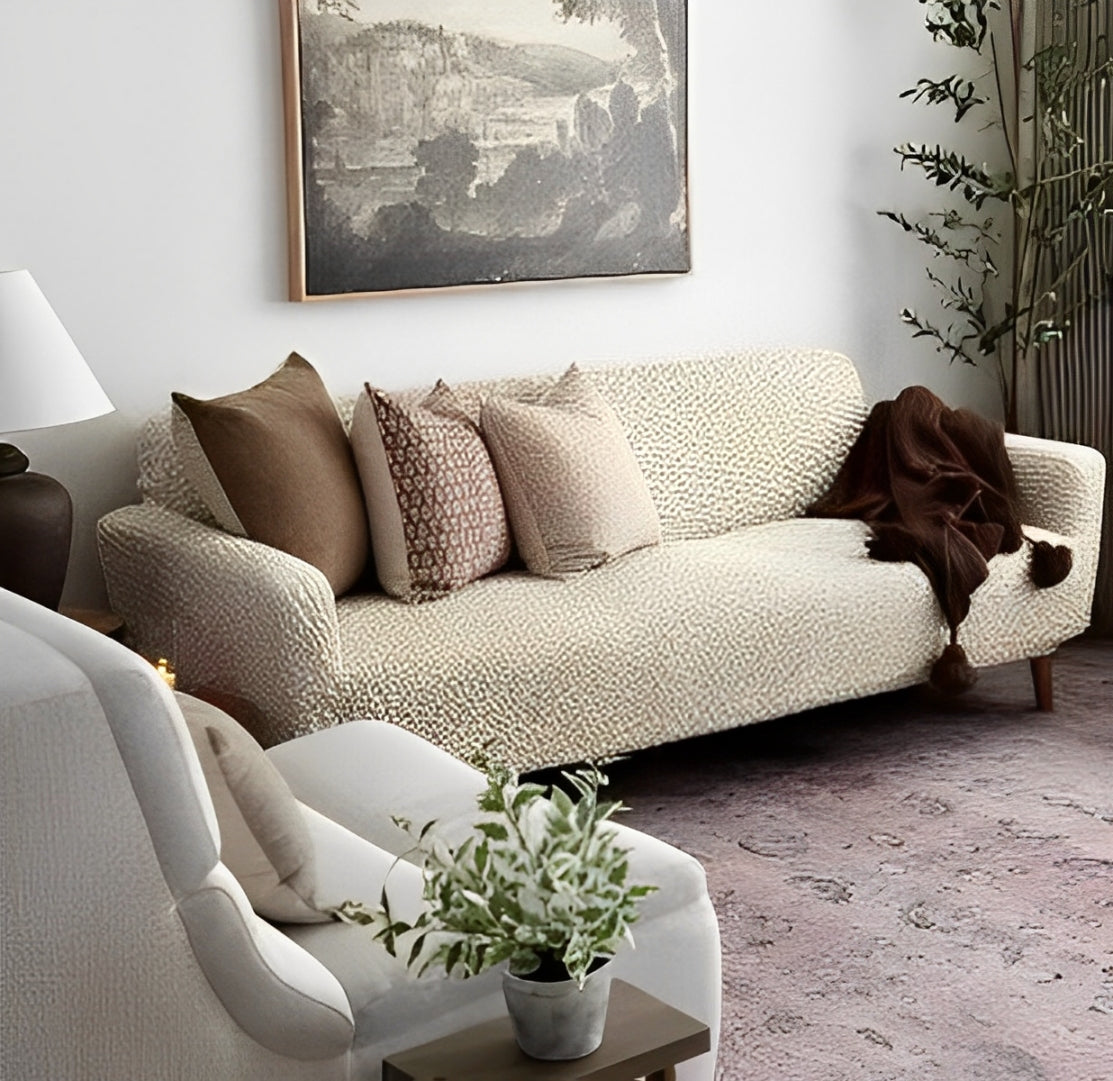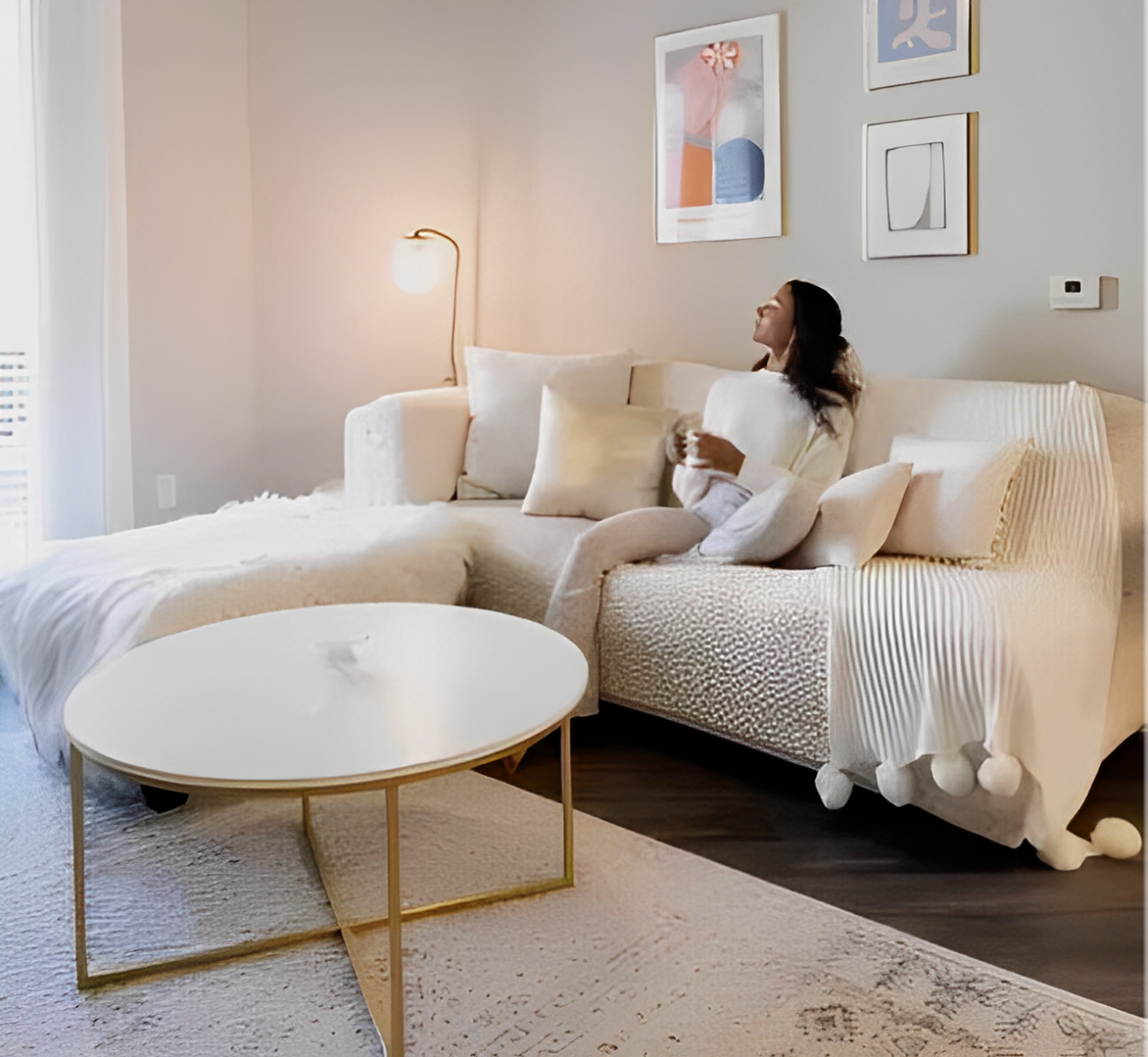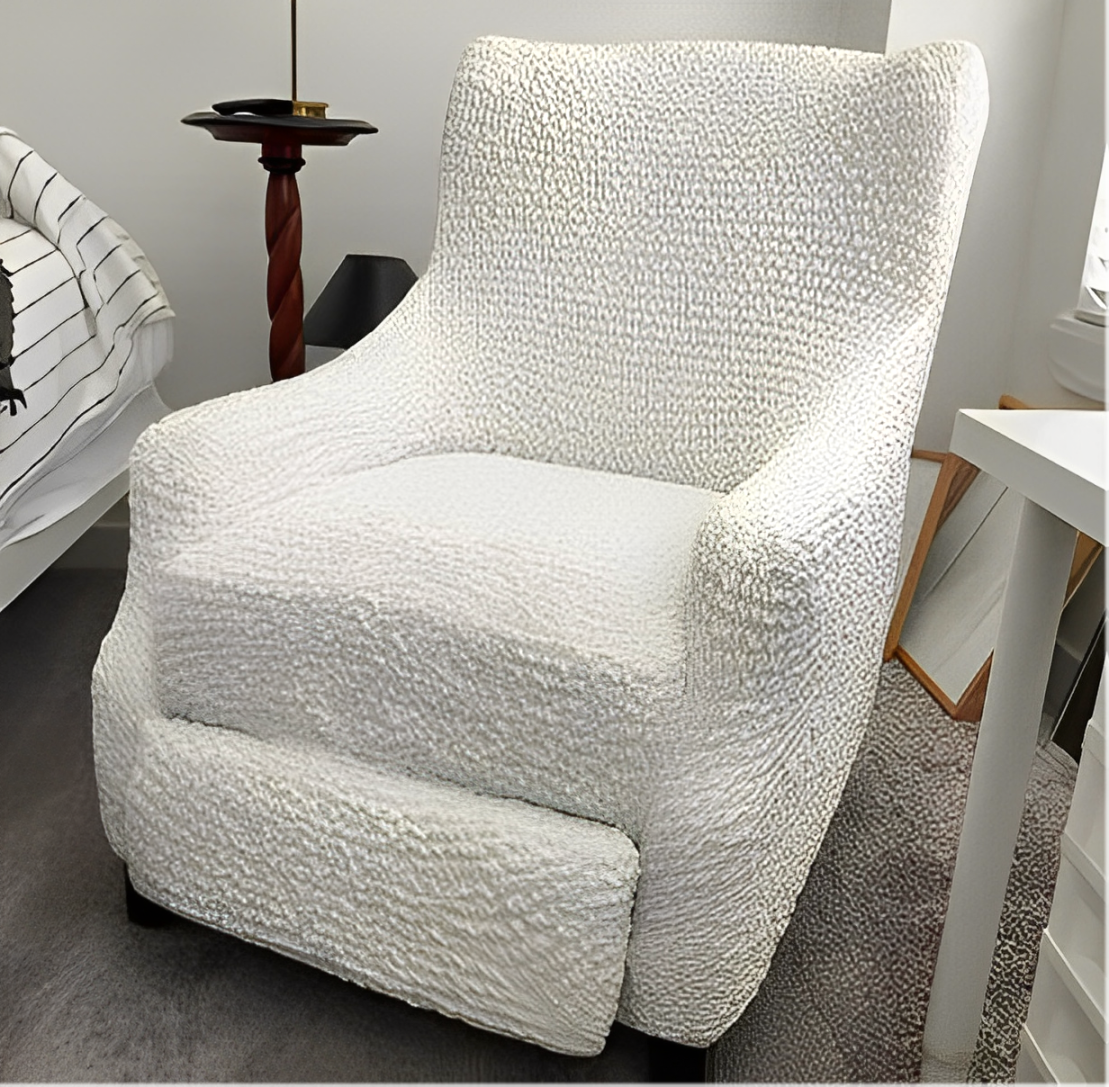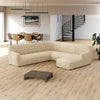We all love that old sofa where we gather with a family or just relax after a busy day. But nothing lasts forever, so if you're wondering how long couches last, the answer depends on a few important things.
A furniture service life largely depends on its original quality, your lifestyle, and the care it receives. Busy homes may see wear in 5–7 years, while careful maintenance can extend it to 15. Let's explore what affects your couch's lifespan and how to make it last longer.
Average Lifespan of a Couch

Furniture lifespan varies with materials, couch frame quality, and daily use. Typically, sofas hold up for 7–15 years before showing serious signs of wear and tear, but heavy traffic or little ones can shorten that timeframe.
Let’s take a closer look at how long a sofa typically lasts:|
Couch Type |
Average Lifespan |
Notes |
|
Fabric |
7–12 years |
Soft and versatile, but the fabric can fade or wear faster with heavy use. Quality microfiber options tend to last longer. |
|
Leather |
10–20 years |
Genuine leather is extremely durable and often looks better with age, while faux leather may start peeling sooner. |
|
Sectional |
8–15 years |
Offers flexibility and space, but can wear unevenly if certain sections get more use. |
|
Recliner |
8–12 years |
Comfort comes at a cost — moving parts and mechanics may wear out faster than the upholstery. |
|
Sleeper |
5–10 years |
Regular folding and unfolding can reduce its longevity, especially if often used as a bed. |
Couches from premium brands featuring hardwood frames, dense foam, and durable upholstery usually last longer than cheaper models. However, even the sturdiest sofa won’t stay in good shape without regular care.
Factors That Affect How Long a Couch Lasts

If you want a sofa that stands the test of time, it’s important to consider both the materials and how it’s built.
Material Quality
The durability of a couch starts with the materials used in every part of it.
1. Frame: The backbone of any sofa is its frame. Solid hardwoods like oak, maple, or ash are the best materials for a long-lasting couch as they provide long-lasting strength. Kiln-dried wood is ideal because it resists warping and cracking. Steer clear of softwoods like pine or engineered materials such as particleboard or MDF — they tend to wobble and split over time.
2. Upholstery: The fabric or leather covering your couch plays a big role in how long it will look and feel good.
- Leather: Full-grain and top-grain leather are among the most durable options. They resist scratches, are easy to wipe clean, and often develop a beautiful patina with age.
- Fabric: Look for a high rub count (the "double rub" test, with 15,000+ being good for residential use and 30,000+ excellent for heavy use). Performance fabrics are made to be stain-resistant, moisture-repellent, and incredibly tough, making them ideal for busy families.
- Microfiber: A popular choice for its softness and inherent stain resistance, microfiber is renowned for its durability and ease of cleaning, making it a strong contender for a long couch lifespan.
3. Cushions: The type of cushion filling affects both comfort and how well your sofa keeps its shape. High-resiliency (HR) foam is the most durable option, springing back reliably after use. Down and feather blends feel luxurious but require regular fluffing, while fiberfill cushions are softer initially but can flatten or clump over time.
Frame and Construction
A beautiful fabric means nothing if the structure beneath is weak. The frame and construction are what truly determine furniture durability.
- Joint Work: Check how the frame is put together. Frames reinforced with corner blocks, double dowels, and metal screws are built to last. Frames held together with just glue and staples are likely to wobble or break sooner.
- Suspension: The support system beneath your cushions is just as important as the frame itself. Eight-way hand-tied springs are top-tier, offering excellent comfort and long-lasting durability. Sinuous (“S”) springs are a solid, long-lasting option for many mid-range sofas, while elastic webbing can sag and wear out faster.
Usage and Lifestyle
Your daily habits and lifestyle play a major role in determining your couch’s lifespan.
- Household Size: A sofa in a single person's home will naturally endure less wear than one in a family of five.
- Kids and Pets: This is the ultimate test of durability. Kids jumping, spilled snacks, and pets with claws — faster wear and tear. For your home, prioritize pet-friendly couches with durable, scratch-resistant fabrics and dark, patterned hides for stains is a must.
- Frequency of Use: Daily use, especially in the same spots, will lead to faster compression of cushions and fabric fatigue.
Cleaning and Maintenance
Even an expensive sofa can be ruined by neglect, while a modest one can look amazing for years with a consistent couch cleaning routine. The effort you put into maintenance directly shapes how long your piece stays beautiful and comfortable.
Regular vacuuming is your first line of protection, lifting out the gritty dust and crumbs that grind down fabric fibers over time. When accidents happen, immediate spot cleaning stops a simple accident from becoming a permanent stain.
For a deeper refresh, consider professional cleaning every year or two for fabric sofas. This isn’t just for stains — it revives the colors and lifts deep-set dirt you can’t see.
For leather sofas, apply a conditioner once or twice a year. This helps maintain softness and prevents the cracking and dryness that make furniture look worn out.
Signs It’s Time to Replace Your Couch

Even with careful maintenance, every sofa will eventually wear out. Deciding when to replace a couch combines practical judgment with personal comfort. Watch for these signs:
-
Sagging cushions: If they no longer spring back or you can feel the hard frame underneath, it’s more than uncomfortable — it can strain your back.
-
Noisy frame: Creaking or cracking often means the internal structure is weakening.
-
Lingering odors: Pet smells or stubborn stains that won’t come out despite cleaning are a clear warning.
-
Visible damage: Wobbly legs, broken springs, or frayed and torn fabric indicate it’s time to act.
-
Style or functionality: Sometimes the sofa is still solid, but it no longer fits your home or lifestyle.
Before you notice signs your couch needs replacing, it's worth exploring a couple of clever alternatives.
Reupholster vs Replace a Couch
When your sofa has a strong, well-constructed frame, updating the upholstery can breathe new life into it for less than replacing it entirely. Plus, you can choose fabrics or colors that better fit your current style and home decor.
There is one more solution for how to refresh an old sofa, even quicker and more budget-friendly. Don't underestimate the power of stylish couch covers. A well-chosen slipcover is more than just a cover-up; it's a design tool. In minutes, you can transform an old, tired couch, protect it from daily wear, stains, pet hair, and scratches, and even upgrade the entire room's aesthetic. It’s the easiest way to test a new color or pattern without the commitment or cost of buying new furniture.
How to Make Your Furniture Last Longer?

If you’re wondering how to make a couch last longer, here are some easy sofa maintenance tips for prolonging couch life:
- Flip and rotate cushions each month to prevent uneven wear and permanent indentations.
- Give down or feather cushions a daily fluff to keep them plump and comfortable.
- Keep sofas away from direct sunlight to avoid fading fabrics and drying out leather.
- Protect your piece with washable slipcovers to handle pets, spills, and everyday wear. Check out our guide on the best slipcovers for couches.
Couch Lifespan FAQs

Can a sofa really last 20 years?
Absolutely! With proper care, a well-built sofa can stay comfortable and look great for two decades or more. Simple habits like flipping and rotating cushions, cleaning spills immediately, and using slipcovers for old couches can dramatically extend their life.
Do leather sofas outlast fabric ones?
Generally, yes. High-quality leather can remain durable and stylish for 20 years or longer. Fabric pieces, even those made from strong materials, typically begin to show signs of wear after 10–15 years. Keep in mind that bonded or faux leather doesn’t have the same longevity as genuine leather or performance fabrics.
How do I know it’s time to replace my couch?
You’ll notice it in comfort and usability. Flattened cushions, a wobbly frame, lingering odors, or stains that won’t come out are clear warning signs. Sometimes the sofa is still functional but no longer fits your home’s style or your family’s needs — that’s your cue to upgrade.
Will reupholstering make a couch last longer?
Reupholstering can breathe new life into your sofa by replacing worn fabric and cushions. While it won’t fix a damaged frame, it’s a smart, sustainable furniture choice for well-built couches that are simply showing age.
Final Thoughts

A couch’s lifespan depends on its build, materials, and the care it receives. With thoughtful maintenance, your sofa can stay cozy, supportive, and attractive for years. And when it’s time for a change, either a simple slipcover, reupholstering, or choosing a new piece ensures your living space remains both comfortable and stylish.











